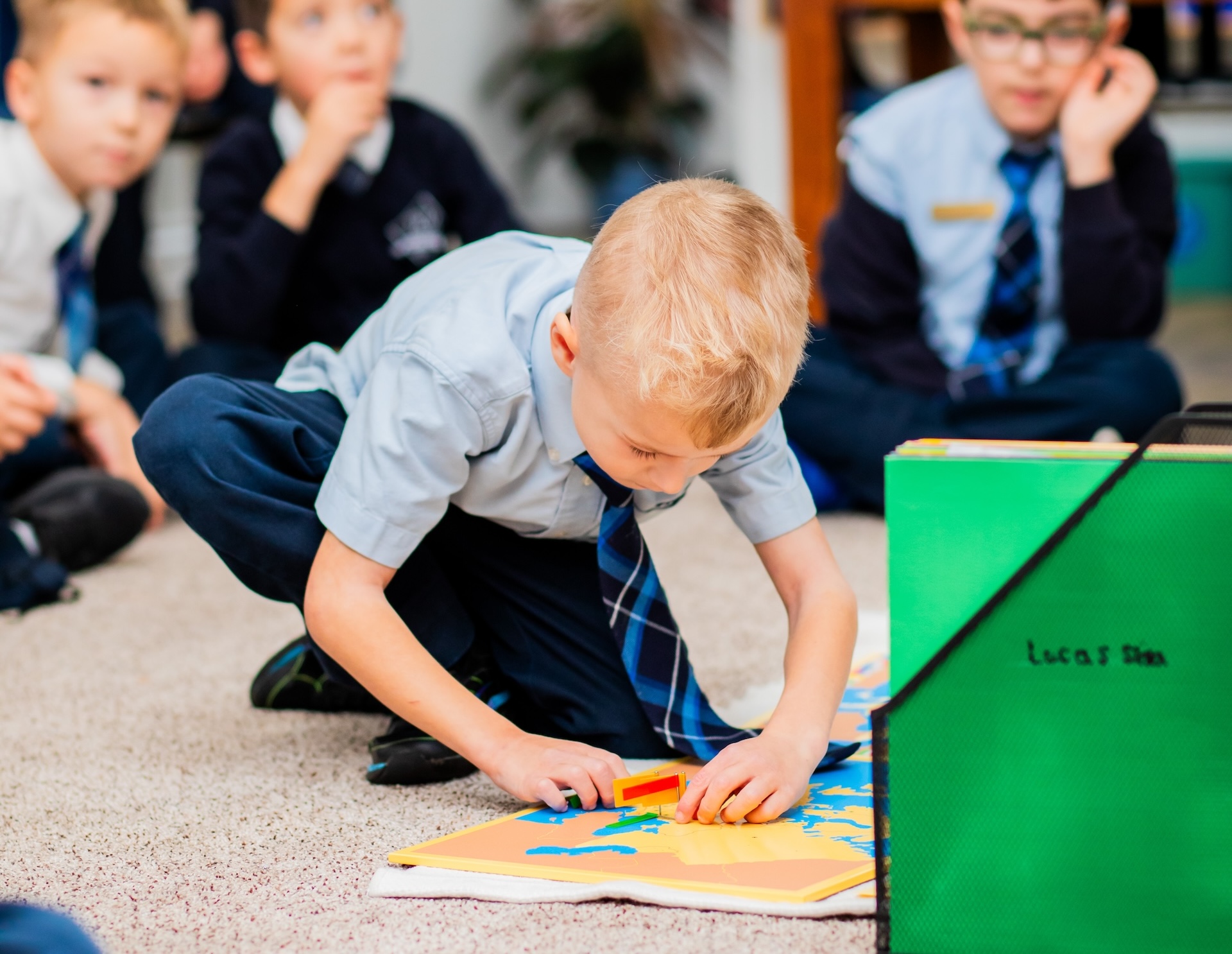The Montessori Method

Dr. Maria Montessori founded the first Montessori school in Rome, Italy in 1907. She was Italy’s first female doctor of medicine. Through observing patients and the public she decided to change her focus towards the education of small children.
Montessori had a clear theory of development. She sought to develop independence, responsibility, and respect for others. In doing this, she developed a model of education. This model is based on three criteria: the environment, the materials, and the teachers’ expectations.
Children are welcome to move freely around the classroom and choose materials, off the shelves, that excite them.
The environment must be safe and size appropriate. Each classroom has five areas of learning: Math, Language, Sensorial, Cultural and Practical Life. All of the furnishings are child-sized. Most classrooms are multi-aged.
Montessori materials are manipulatives for the children. Materials are self-corrective to enable independent learning as well as a growth in self-confidence. Many abstract concepts (e.g. sounds of our alphabet or the decimal system) may all be learned by six years of age through the use of these concrete manipulative materials. Curriculum that is added to our program that is not Montessori in nature is daily French instruction, Spanish, Music, Physical Education, Cooking and Yoga.
The role of the teacher is to guide learning rather than to teach. In a Montessori classroom, there is little teaching of the classroom as a whole. Group times typically take up only 20 to 40 minutes in a 3-hour session. Typically, the teacher is found moving around the room, suggesting work to children on an individual basis. The teacher gives short individual or small group presentations throughout the day and the presentations are never hurried or against the will of the student.

Our Programs
Trail Ridge has program options for children aged 18 months to 9 years old

